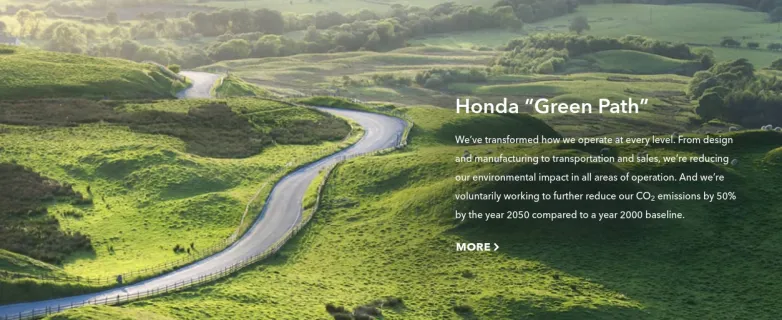Honda & Nike Secure New Renewable Energy Supplies
Sep 27, 2019 09:40 PM ET

If renewable energy is as bad as the fossil fuel industry claims, why are so many major corporations signing up for renewable energy deals? Are their leaders unable to do simple arithmetic? Are they squandering mountains of corporate cash just so they can brag about how “green” their operations are? No. Businesses have not suddenly taken leave of their senses. If renewable energy didn’t pencil out, as the like to say in the parlance of accountants, they wouldn’t do it.
Honda has just inked two virtual power plant agreements that will cover more than 60% of its electricity usage in North America. Together they will allow Honda to fully offset all the carbon intensive electricity it gets from electrical grids in Ohio, Indiana, and Alabama, three states where coal power is still dominant.
Starting in fall of 2020, Honda will purchase 530,000 MWh a year from 120 MW of wind power generated by the Boiling Springs Wind Farm in Oklahoma, a development of the energy company E.ON. Then in fall of 2021, Honda will secure an additional 482,000 MWh a year from 200 MW of solar power generated from a Texas solar facility.
Honda’s combined agreements for the output of 320 MW of renewable generation capacity will result in the purchase of 1.012 million MWh of electricity per year, making it the largest renewable energy procurement commitment for an automaker and one of the largest VPPA commitments in the US market. Once fully operational, these VPPAs will offset more than 800,000 metric tons of CO2e emissions annually, the equivalent of 100,000 US households worth of CO2e emissions from household energy usage, according to Yahoo! Finance. The VPPAs will lower the carbon impact from Honda’s North American operations by 60%.
A virtual power purchase agreement does not mean a company such as Honda actually uses zero carbon energy for its operations but the electricity generated does make the grid as a whole less carbon intensive. Is it the ideal situation? Probably not, but it is a significant step forward in that it drives the renewable energy revolution forward. For instance, in this case, the agreement with Honda was the determining factor in the decision by E.ON to build the Boiling Springs wind farm in Oklahoma.
Nike Distribution Center In Belgium Powered By 100% Renewables

Credit: Nike
Like Honda, Nike is intent on reducing its global carbon footprint. According to Supply Chain Dive, its newest 1.5 million square foot distribution center in Ham, Belgium will be powered 100% by locally sourced renewable energy from 5 sources — wind, solar, geothermal, hydroelectric, and biomass.
“Our new Court Distribution Center represents Nike’s continued investment in a fast and flexible supply chain,” says Eric Sprunk, Nike COO. He notes the new center will enhance the company’s ability to deliver to customers across Africa, Europe and the Middle East.
One interesting feature of the new distribution center is that it is located alongside one of Belgium’s many ship canals, which means the products coming in and going out can travel by barge rather than by truck. The company says shipping by water will eliminate 14,000 truck journeys every year, all of which would involve diesel powered tractors. Nike is committed to reducing its carbon footprint and eliminating waste from its supply chain.
The Takeaway
Will the news from Honda or Nike change the world significantly? No, of course not. But like the tiny streams that combine to form a river, each contributes to the clean energy transition. Ignore the naysayers and shills paid for by Koch Industries. Renewable energy is the future and the future is closer than ever before.
Also read


